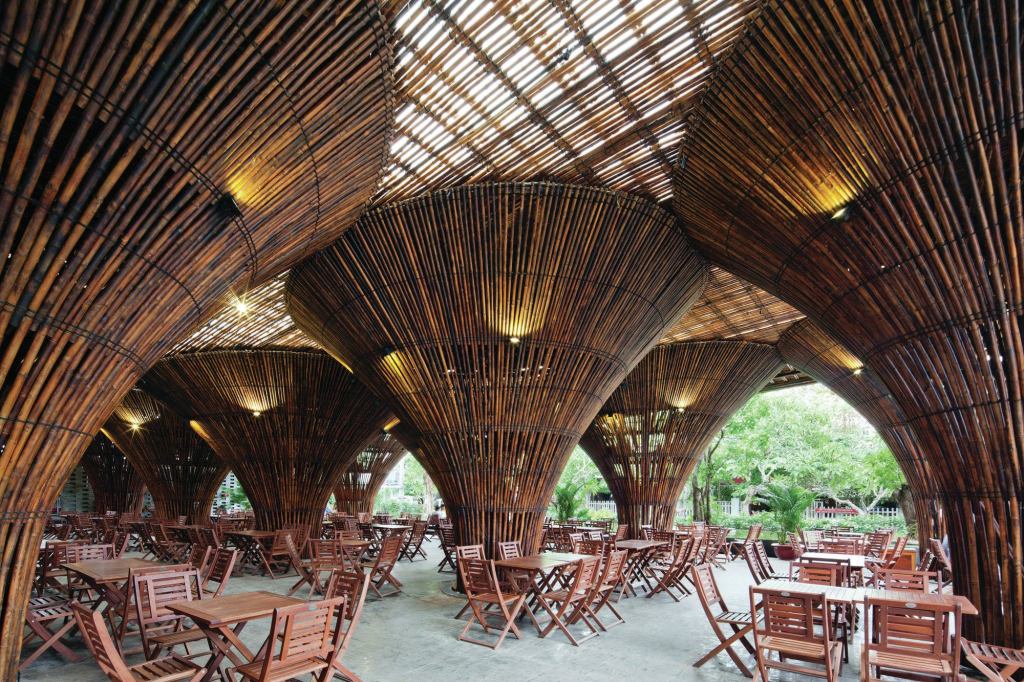Bamboo may be the ultimate sustainable building material. As one of the world’s fastest-growing plants, it can sprout up to 4 inches per day depending on variety, soil, and climate.
Vo Trong Nghia Architects’ design of the Indochine Café in Kon Tum, Vietnam, proves that the fast-growing grass can look sophisticated—even when it is left in its natural state.
Built in 2013 as part of a hotel complex on the Dak Bla River, the 6,000-square-foot open-air restaurant is elegant in its simplicity: 15 inverted cones made of bamboo canes rise 20 feet to create a fan vault of sorts that supports a butterfly roof, also made from bamboo.
The columns are arranged in a 3-by-5 grid in the café’s 60-foot-by-100-foot plan. Each one is 20 feet in diameter at the top and tapers to 5 feet at the base, which is anchored into a concrete foundation with steel plates and bolts.
Traditional Vietnamese fish baskets served as the inspiration for the columns. Principal designer Vo Trong Nghia, founding partner of his eponymous firm in Ho Chi Minh City, Vietnam, first worked with the material as a child, helping his family make bamboo tableware.
The challenge in designing large structures with bamboo, he says, is respecting its mechanical qualities. Bamboo is dense and hard, but it can bend into strong, curved shapes. Pound for pound, it has three to four times the tensile strength of steel, but its behavior depends on whether it is used in whole, cut in cross-sections, or laminated.
Part of the strength of each column comes from the arched geometry of its approximately 400 bamboo canes bound by rope and three steel tension rings inside each cone at 5, 10, and 15 feet above finished floor. An internal central cane bundle and four to eight diagonal cross-braces provide additional support for the roof. Fasteners and conventional construction methods would have ruined the round-cane texture highlighted in Nghia’s design. Steel-pin joints, for instance, would generate localized point loads that would split bamboo’s hollow hardened cell walls and buckle its joints.
The 15 columns were thus prefabricated by means of low-tech joinery—mostly synthetic fiber and a few small nails. Finding structural engineers was difficult, Nghia says. “We based the design on traditional experience, but it follows logical rules of structure. And we always make a mock-up before construction, placing weights on top to test how much the bamboo bends.”
Likewise, it’s almost impossible to find contractors experienced in traditional bamboo construction techniques, even in Vietnam. For example, to prevent insect infestation, Nghia knew to soak the bamboo in mud and smoke it dry. As his firm designs more bamboo structures, he has had to hire and train his own construction teams, which now work under a subsidiary company, Wind and Water House.
In total, the café contains more than 10,000 bamboo canes, each about 5 years old and costing roughly $1 each. Harvested from Vietnam’s many forests, the bamboo bends into strong, flowing shapes that Nghia loves.
